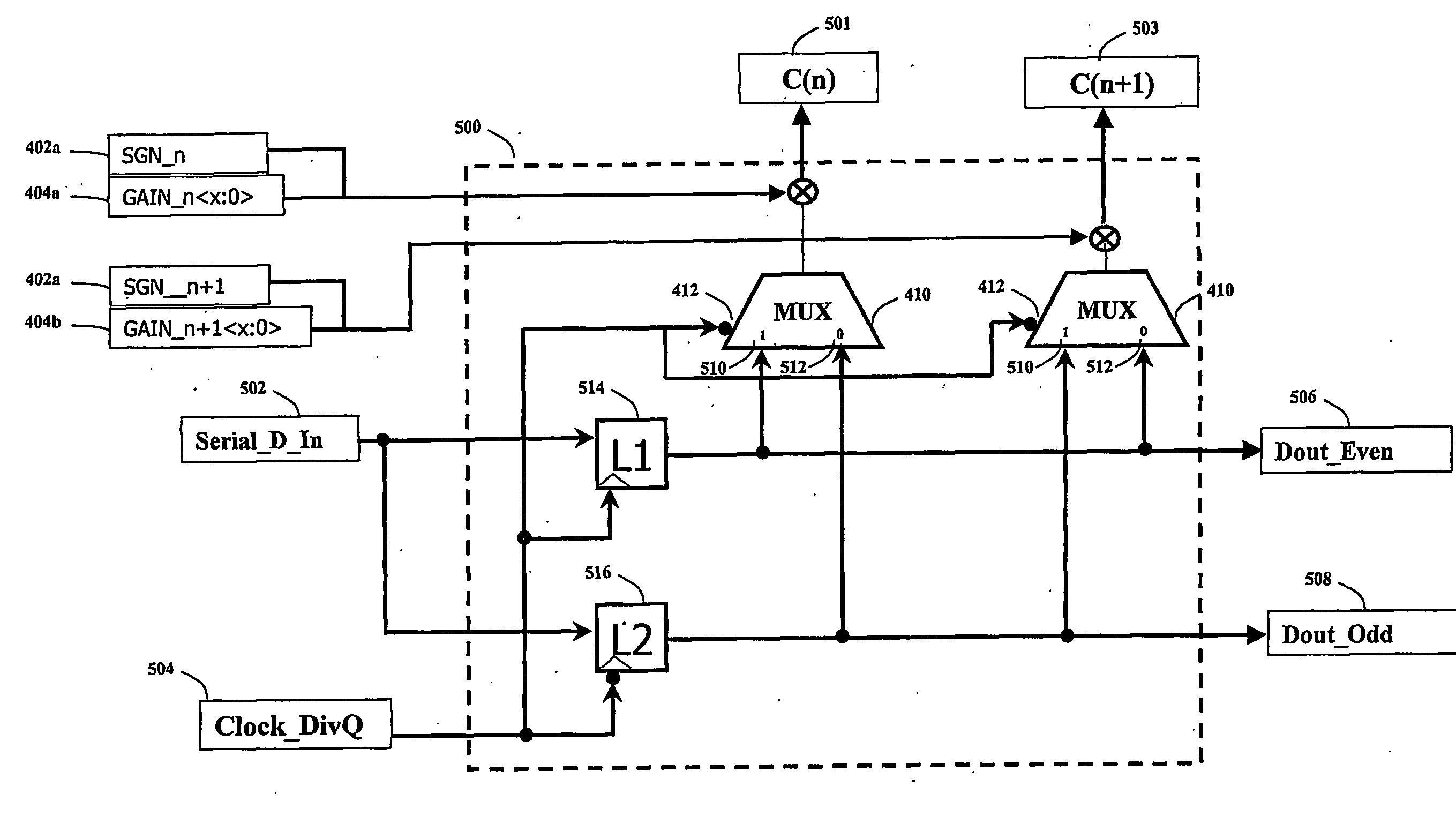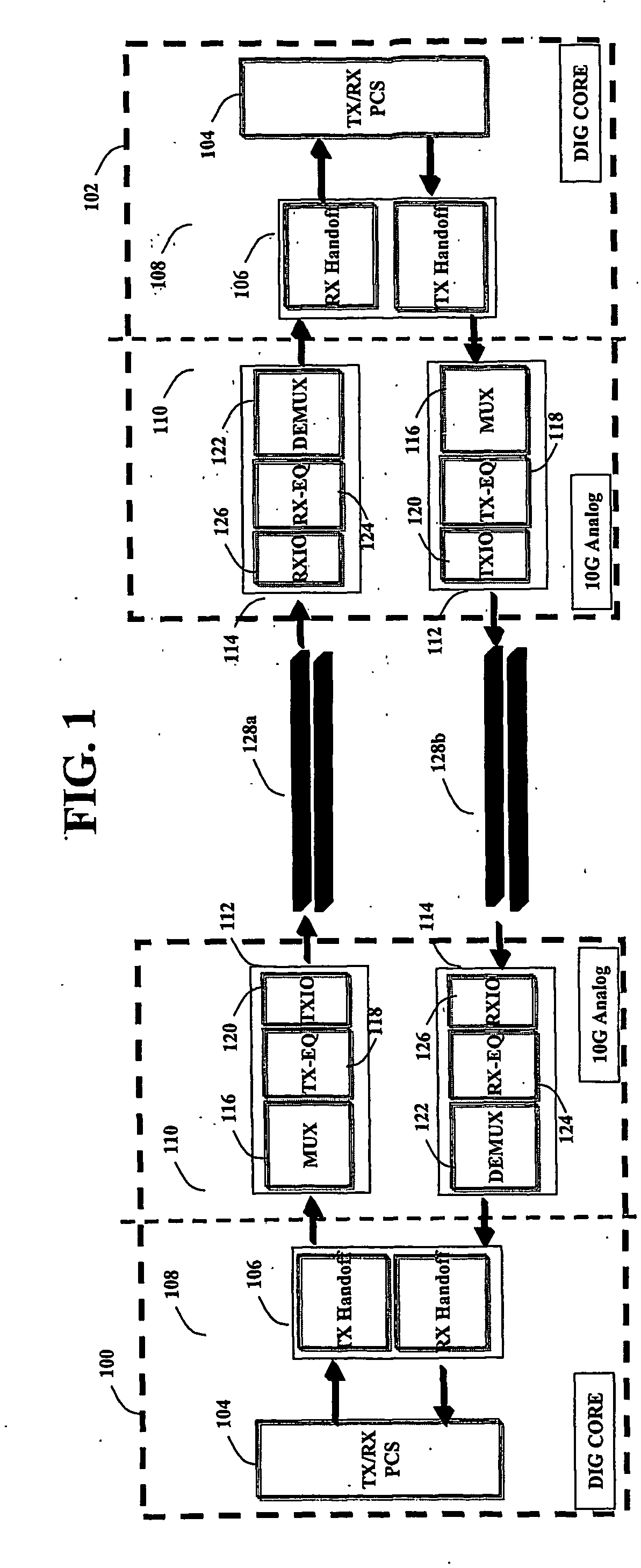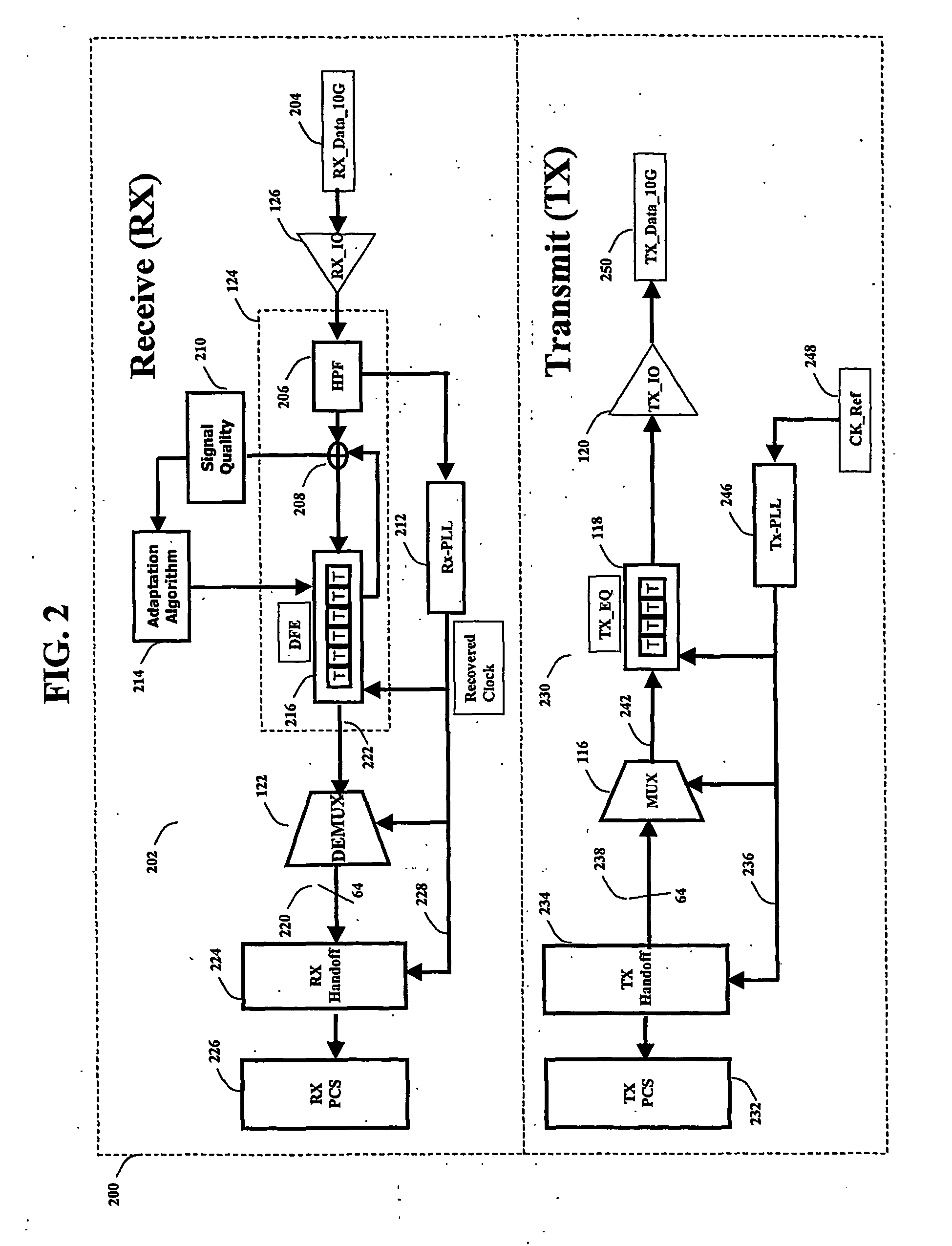Operating frequency reduction for transversal fir filter
- Summary
- Abstract
- Description
- Claims
- Application Information
AI Technical Summary
Benefits of technology
Problems solved by technology
Method used
Image
Examples
Embodiment Construction
[0021] The present invention provides a method and a system for using a double-edge clocking scheme and reducing the frequency of operation for a transversal FIR filter. The invention comprises of a set of 2:1 multiplexers, whose output amplitude can be controlled such that it is possible to apply a gain to the selected input signal. The invention is used in combination with a transversal FIR filter that operates at one half the intended data rate. The transversal filter is comprised of 2 separate sets of analog latches, where one set is positive edge active and the other set is negative edge active.
[0022] The present invention can be used to implement very high-speed transversal FIR filters where the frequency requirements may be at the very limit of some mainstream CMOS technologies and geometries. Since the frequency of operation for the latches may be reduced by a factor of 2, the overall current consumption can also be reduced, and thus an overall reduction in power consumptio...
PUM
 Login to View More
Login to View More Abstract
Description
Claims
Application Information
 Login to View More
Login to View More - R&D
- Intellectual Property
- Life Sciences
- Materials
- Tech Scout
- Unparalleled Data Quality
- Higher Quality Content
- 60% Fewer Hallucinations
Browse by: Latest US Patents, China's latest patents, Technical Efficacy Thesaurus, Application Domain, Technology Topic, Popular Technical Reports.
© 2025 PatSnap. All rights reserved.Legal|Privacy policy|Modern Slavery Act Transparency Statement|Sitemap|About US| Contact US: help@patsnap.com



